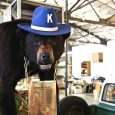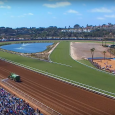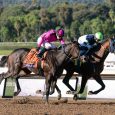By Ray Wallin
Once a handicapper finds what wins it is only natural to be excited. Thoughts start racing through your head about how much you could stand to make each week, month, or over the course of the meet you play. Your dream of making your living playing the races seems to be within your grasp. All you need to do is increase what you are betting to make more money.
Seems easy enough to do, right?
A reader recently emailed me for advice on how to scale up his wagering. He is having success consistently playing the year-round night tracks such as Penn National, Mountaineer, and Charlestown. He feels that if he could stand to make more money if he bet more but does have reservations about if that will work.
Both through my own experience and watching others, it isn’t as easy as “bet a bigger value, make more profit.” There are a lot of obstacles that you need to be wary of in your quest to scale up your wagering operation. Some you can control, others you need to work around.
But first, here is a little background on our subject, Pennywise Patrick. He likes to play the races. Patrick is successful, tracking every wager and can account for every cent. He plays a fixed amount on the straight wagers he likes and the same base unit for exotic wagers. Due to his recent success he wants to bump up his unit size on both straight wagers and exotics.
Right-sized bankroll
Pennywise Patrick is off to a good start. He has a disciplined approach to his betting keeping a fixed unit size that does not seem excessive in comparison to his bankroll. I wasn’t given the particulars, but I am going to guess it is in the 3% to 5% range for a straight bet since he told me he hits close to 40% of those wager types.
However, if you are going to up your bet size, either as a fixed value or as a percentage of the overall bankroll, your bankroll must grow proportionately. If Patrick was using 5% of his bankroll as the fixed value, doubling his bet to 10% makes him vulnerable to depleting his bankroll quickly on a bad beat.
If you are going to increase your bet size, especially if it is a fixed value amount, you need to increase your bankroll. Likewise, if you stay at the percentage based value the only way to increase your wager size is to increase your bankroll while still playing the same 3% to 5% basis.
Be able to weather bad runs
This point piggybacks off the previous item. If you increase your bet size, your bankroll must increase proportionately. If you don’t, you could wipe out half your bankroll on a bad run very quickly. In Pennywise Patrick’s case this is especially true with a fixed size wager.
In sports it is rare that any team loses, or wins, 20 games in a row. It does happen, but that is more the exception than the rule. In the case of Patrick, if he used a fixed value that was close to 5% of what he considered his bankroll, he could go on a Baltimore Orioles style losing streak and blow the last penny of it.
Pick an amount that will allow you to weather the storm of a bad run. If you played the fixed value approach, consider dropping that value if your bankroll reduces to a certain level.
Notice pool size
Handicappers that play Saratoga on a summer afternoon don’t have this issue, but for those small track players pool size is a real concern. I am typing this article on a Monday evening and pulled up the pool totals for the fourth race at Western Fair Raceway. The will pool had about $5,000 in it, the place pool had $1,479, and the show pool had a whopping $872. In comparison, the second race at Mountaineer had $27,864 in the win pool, $8,071 in the place pool, and $9,646 in the show pool.
When there are millions in handle on a card, this is not going to be an issue unless you are dropping six figure values on a race. But for a weeknight player who cracked the secret of playing Dover Downs, Western Fair Raceway, or Grants Pass you could move the odds with a $100 wager. If you are expecting a certain return based on your systems performance, you may underperform by a few percentage points as a result.
Again, not that you’ll move the odds in the Kentucky Derby, but in a harness non-winners of $1,500 in the last six races at a track in the middle of nowhere, you’ll want to keep an eye on the pool totals.
Becoming more risk averse
How many times have you said to yourself, “I’ll take a shot on this horse for a few bucks,” without even a second thought? ‘
Probably too many to count, right?
What if you upped your bet size from “a few bucks” to say $20, $50, or even $100? Are you as likely to take that flyer on that horse you kind of like? At that level it is starting to feel like a lot of money to be chasing a maybe.
Makes you think twice about it, right?
Remain confident
Similarly, once you are staking a much larger amount, even if you are confident in the bet, you may start having second thoughts about putting that sum of money on the line. It is only natural to question yourself and abilities with more money at risk. You will start to pass on opportunities that the lower-bet-sized version of yourself would have bet without second thought.
Once you start doubting yourself and passing on your best opportunities, your profits will take a hit. Take a breath. Trust in yourself. Remember that you need to stay confident in what you know and proven has worked in the past.
If you find yourself in the position of looking to scale up your wagering to maximize your profits, it means you are doing something right. By remembering to appropriately scale up your bankroll, being able to weather bad runs, being cognizant of what you are wagering on, and trusting in what got you to this level, you will be successful.



